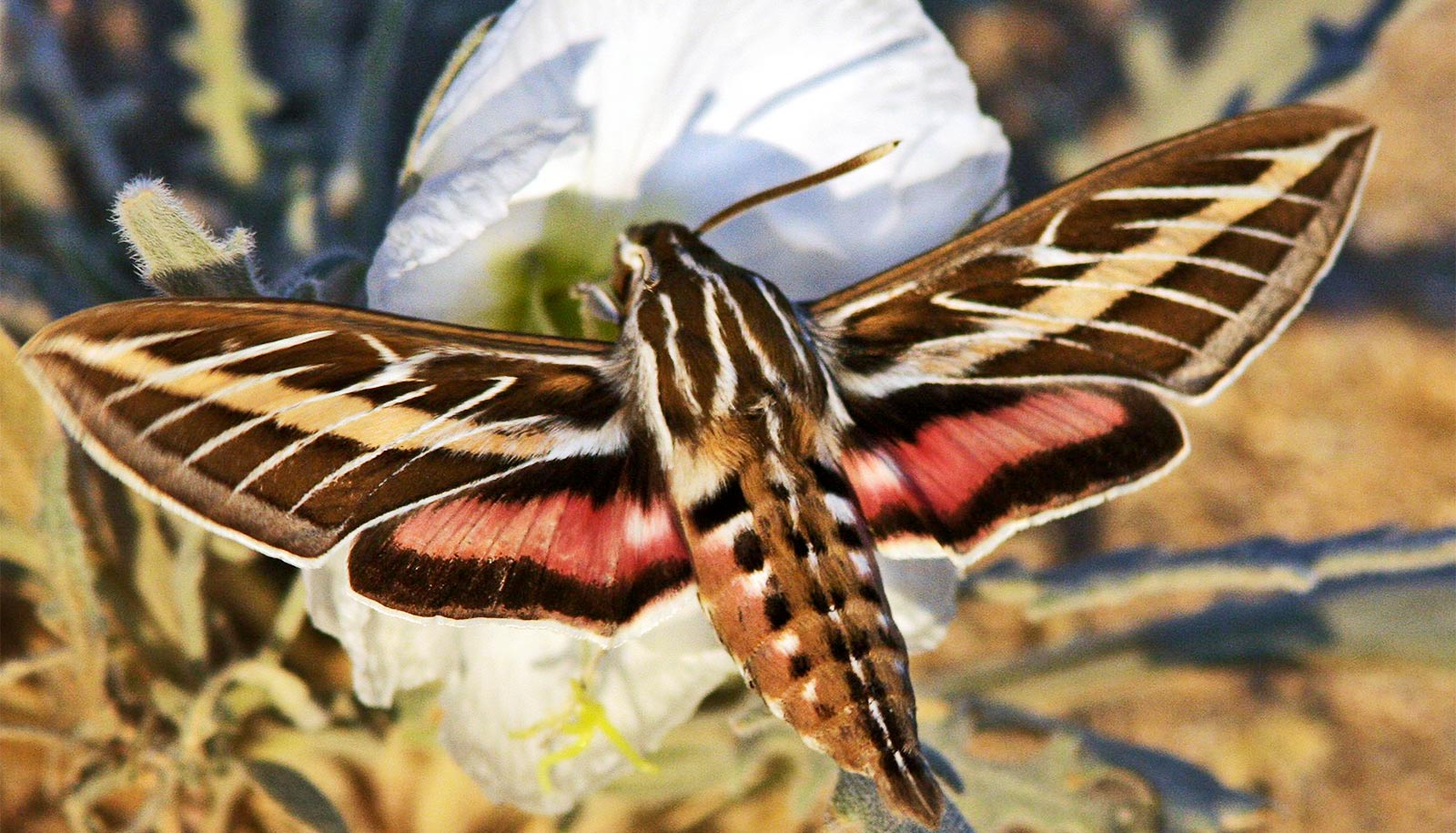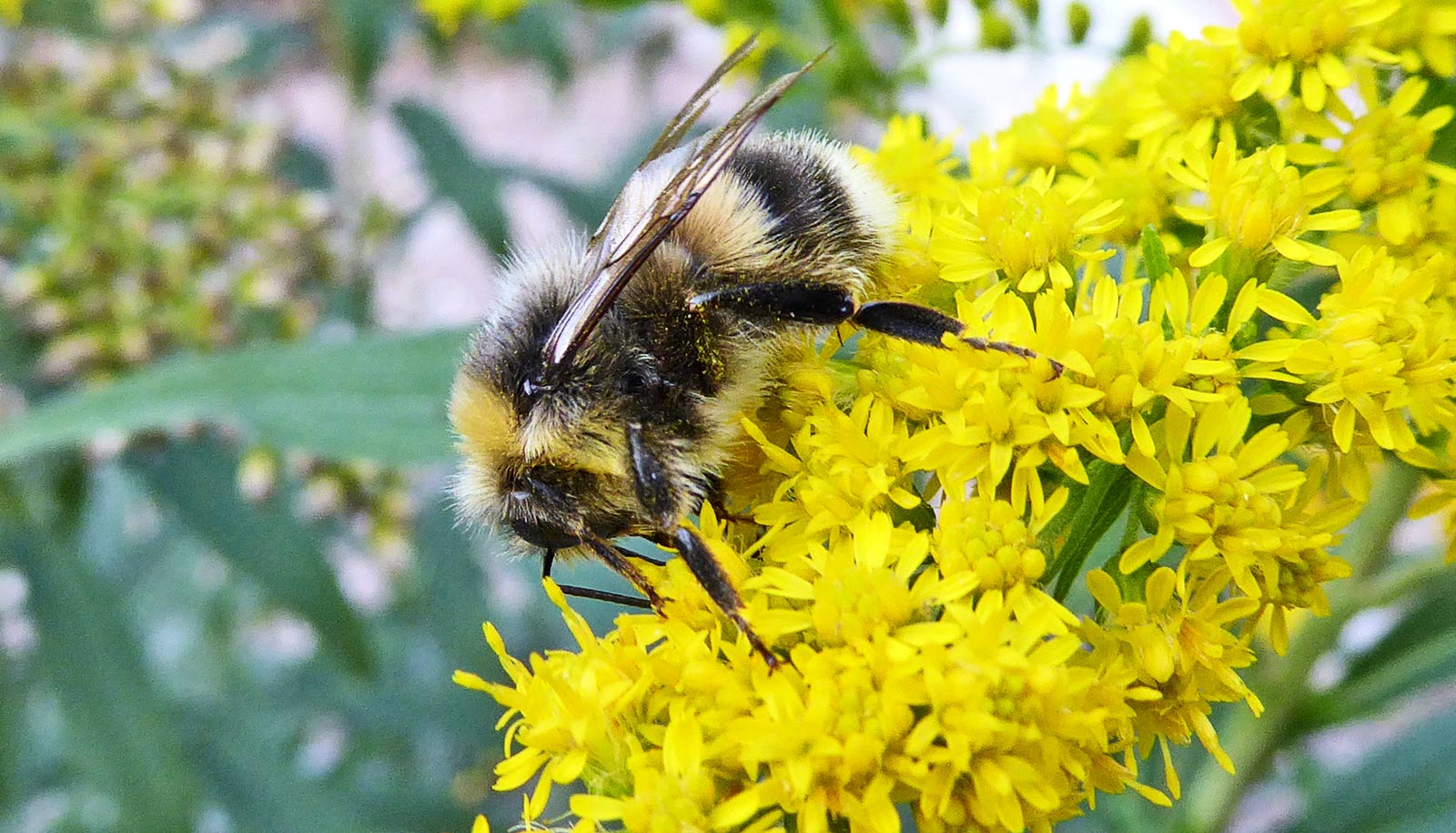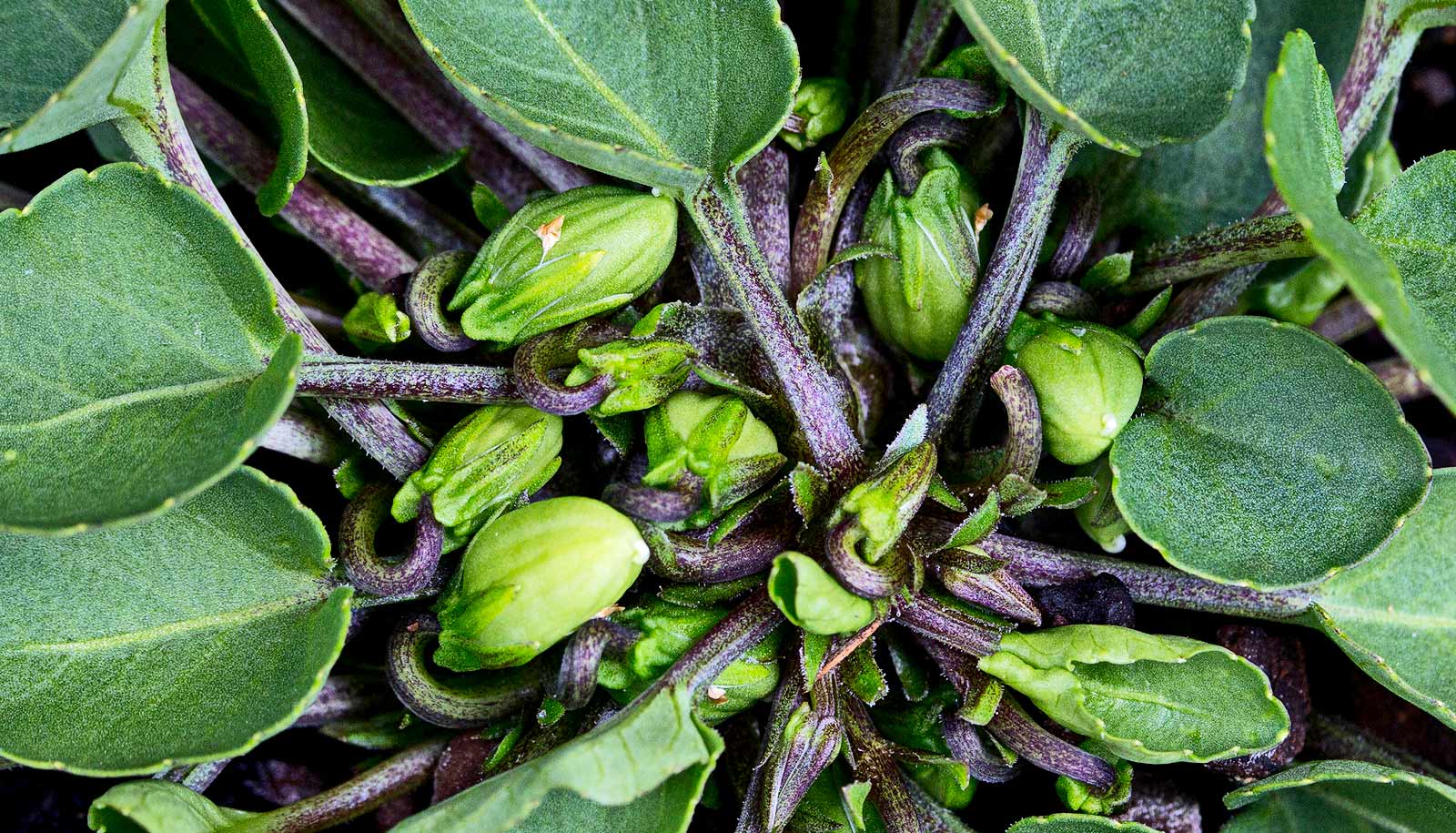Researchers have discovered a major cause for a drop in nighttime pollinator activity—and people are largely to blame.
The researchers found that nitrate radicals (NO3) in the air degrade the scent chemicals released by a common wildflower, drastically reducing the scent-based cues that nighttime pollinators rely on to locate the flower.
In the atmosphere, NO3 is produced by chemical reactions among other nitrogen oxides, which are themselves released by the combustion of gas and coal from cars, power plants, and other sources.
The findings, published in the journal Science, are the first to show how nighttime pollution creates a chain of chemical reactions that degrades scent cues, leaving flowers undetectable by smell. The researchers also determined that pollution likely has worldwide impacts on pollination.
For the study, the researchers studied the pale evening primrose (Oenothera pallida), a wildflower that grows in arid environments across the western US. They chose this species because its white flowers emit a scent that attracts a diverse group of pollinators, including nocturnal moths, which are one of its most important pollinators.
At field sites in eastern Washington, the researchers collected scent samples from pale evening primrose flowers. Back in the laboratory, they used chemical analysis techniques to identify the dozens of individual chemicals that make up the wildflower’s scent.
“When you smell a rose, you’re smelling a diverse bouquet composed of different types of chemicals,” says Riffell. “The same is true for almost any flower. Each has its own scent made up of a specific chemical recipe.”
Once they had identified the individual chemicals that make up the wildflower’s scent, the team used a more advanced technique called mass spectrometry to observe how each chemical within the scent reacted to NO3. They found that reacting with NO3 nearly eliminated certain scent chemicals. In particular, the pollutant decimated levels of monoterpene scent compounds, which in separate experiments moths found most attractive.
Moths, which smell through their antennae, have a scent-detection ability that is roughly equivalent to dogs—and several thousand times more sensitive than the human sense of smell. Research suggests that several moth species can detect scents from miles away, Riffell says.
Using a wind tunnel and computer-controlled odor-stimulus system, the team investigated how well two moth species—the white-lined sphinx (Hyles lineata) and the tobacco hawkmoth (Manduca sexta)—could locate and fly toward scents.
When the researchers introduced the pale evening primrose’s normal scent, both species would readily fly toward the scent source. But when the researchers introduced the scent and NO3 at levels typical for a nighttime urban setting, Manduca’s accuracy dropped by 50% and Hyles—one of the chief nocturnal pollinators of this flower—could not locate the source at all.
Experiments in a natural setting backed up these findings. In field experiments, the team showed that moths visited a fake flower emitting unaltered scent as often as they visited a real one. But, if they treated the scent first with NO3, moth visitation levels dropped by as much as 70%.
“The NO3 is really reducing a flower’s ‘reach’—how far its scent can travel and attract a pollinator before it gets broken down and is undetectable,” says Riffell.
The team also compared how daytime and nighttime pollution conditions affected the wildflower’s scent chemicals. Nighttime pollution had a much more destructive effect on the scent’s chemical makeup than daytime pollution. The researchers believe this is largely due to sunlight degrading NO3.
The team used a computer model that simulates both global weather patterns and atmospheric chemistry to locate areas most likely to have significant problems with plant-pollinator communication. The areas identified include western North America, much of Europe, the Middle East, Central and South Asia, and southern Africa.
“Outside of human activity, some regions accumulate more NO3 because of natural sources, geography, and atmospheric circulation,” says Thornton, who adds that natural sources of NO3 include wildfires and lightning. “But human activity is producing more NO3 everywhere. We wanted to understand how those two sources—natural and human—combine and where levels could be so high that they could interfere with the ability of pollinators to find flowers.”
The researchers hope their study is just the first of many to help uncover the full scope of pollinator failure.
“Our approach could serve as a roadmap for others to investigate how pollutants impact plant-pollinator interactions, and to really get at the underlying mechanisms,” says Thornton. “You need this kind of holistic approach, especially if you want to understand how widespread the breakdown in plant-pollinator interactions is and what the consequences will be.”
The study highlights the dangers of human-fueled pollution and its implications for all pollinators as well as the future of agriculture.
“Pollution from human activity is altering the chemical composition of critical scent cues, and altering it to such an extent that the pollinators can no longer recognize it and respond to it,” says Riffell.
Approximately three-quarters of the more than 240,000 species of flowering plants rely on pollinators, Riffell says. And more than 70 species of pollinators are endangered or threatened.
Jeremy Chan, a postdoctoral researcher at the University of Copenhagen who conducted this study as a doctoral student in biology at the University of Washington, is the paper’s lead author. Additional coauthors are from the University of Washington and Seattle University.
The Air Force Office of Scientific Research, the National Science Foundation, the National Institutes of Health, the Human Frontiers in Science Program, and the University of Washington funded the work.
Source: University of Washington



